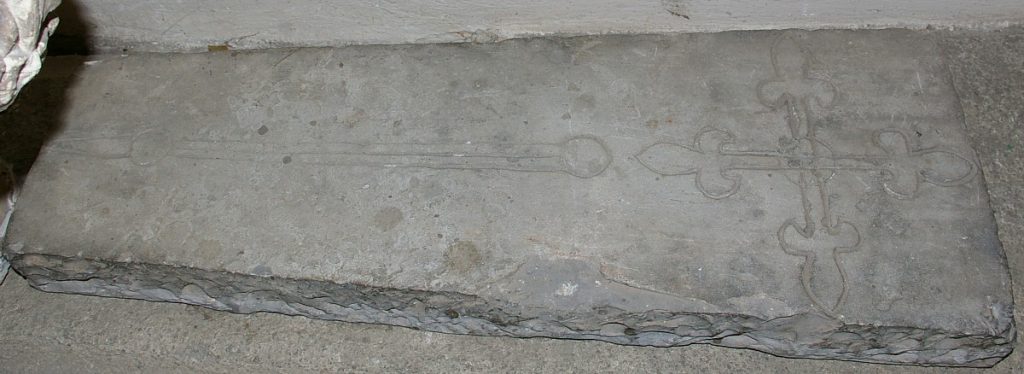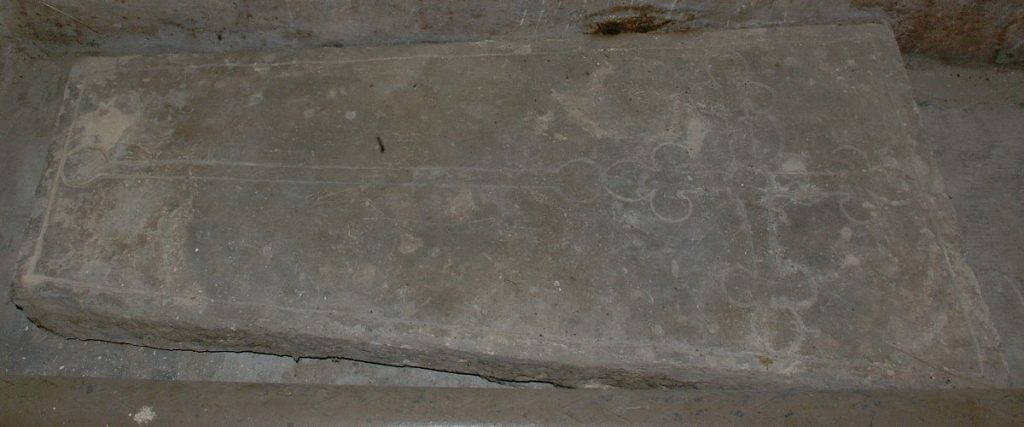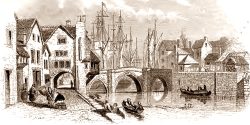In the south aisle of the church there are two ornate tomb recesses. These are Victorian, evidently constructed during the re-ordering supervised by Brakspear in 1850-54.
Within the easternmost recess there is a shallow stone coffin, with finely ashlared sides, covered by a lias lid bearing a foliate head to a worn staff, possibly in the shape of a cross. This tomb rests on a course of bricks. It appears out of sensible context.
Lying loosely placed upon the lid of the stone coffin is a small well-incised slab of considerable delicacy and in good condition.

Within the westernmost recess there has been lain a larger single slab resting directly on the floor (but not within it).

Documentary evidence suggests that the slabs were once lying unattached in the Early English tomb recesses in the north aisle. These are now occupied by column radiators.
Rev A H Powell The Ancient Borough of Bridgwater, 1907 Bridgwater: Page& Son p111
On the north side of the nave, towards the west, are two quite old recesses covering the tombs of some great ones whose very names are now utterly lost. The lines of the canopies and the cusps suggest very early work indeed. Lying loosely within these recesses are two beautiful Early English stone grave-slabs, quaintly carved in great simplicity. with two outlines forming together the figure of a cross. Within the nave on the south side opposite are two modern recesses cut in the wall, which need no notice.
The stone coffin is a strange relic. There is a reference to the finding of a stone coffin within the precinct of St John’s Hospital at Eastover.
Parker, G The Ancient History of Bridgwater 1877 Bridgwater: E T Page p 10 Footnote (h)
The site of St John’s Hospital was at the end of Eastover, and in digging for the foundations of a house near the present Queen’s Head Inn some years ago was found a stone coffin. [Repeated on p 48]
Jarman, SG A history of Bridgwater 1889 London: Stock p21
At the time of the formation of the Bristol & Exeter c.1840 (now merged into the Great Western) Railway, a few high mounds marked the site of the hospital, and in the course of building operations in that neighbourhood many interesting “finds” were brought to light, includings numbers of human bones, military weapons, a stone coffin, and a variety of other relics.
